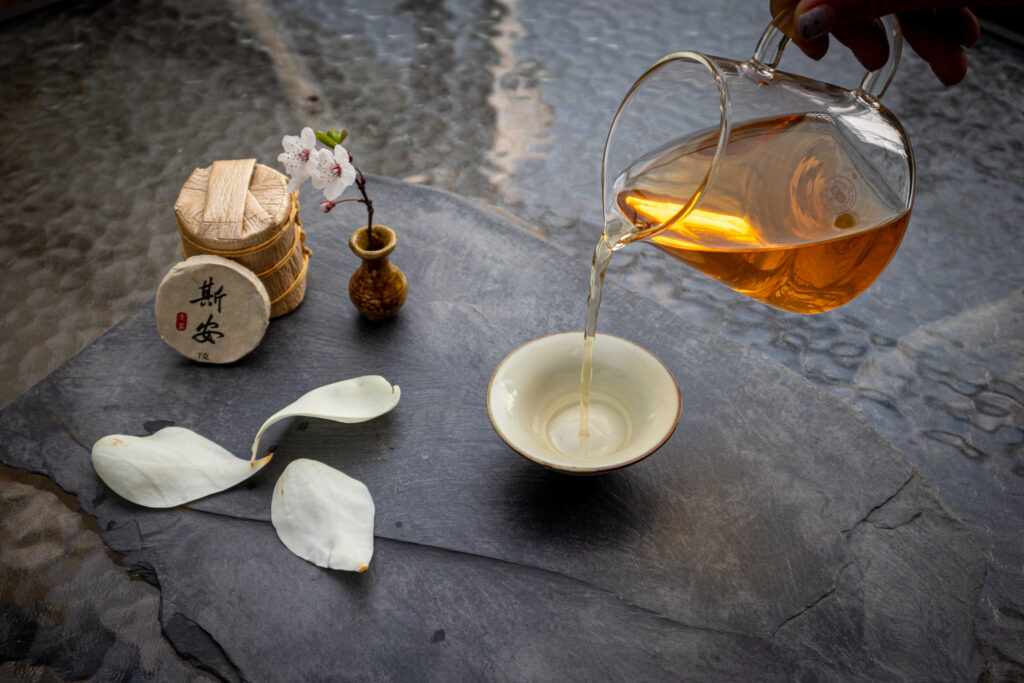Pu'er Tea:
The Ancient Brew with Modern Benefits
Pu'er Tea
More than just a beverage; it’s a journey through history and a gateway to numerous health benefits. For tea enthusiasts and health-conscious individuals alike, understanding the depth and richness of Pu’er tea can transform your daily tea ritual.
A Brief History
Originating from the Yunnan province in China, Pu’er tea has been cherished for centuries. Its roots trace back to the Tang Dynasty (618-907 AD), making it one of the oldest forms of tea. The unique process of fermenting Pu’er tea sets it apart from other teas. This ancient method not only enhances its flavor but also amplifies its health benefits.
Pu’er tea’s name comes from the town of Pu’er in Yunnan, which was a significant trading hub for tea. For more detailed historical insights, you can refer to the Wikipedia page on Pu’er tea.
The Health Benefits of Pu'er Tea
Modern science has begun to uncover the numerous health benefits associated with Pu’er tea. Here are some of the most notable:
1. Digestive Aid: Pu’er tea is known to help with digestion, making it an excellent choice after a heavy meal. Its unique fermentation process aids in the breakdown of fats, promoting better digestion.
2. Weight Management: For those looking to manage their weight, Pu’er tea can be a valuable addition to your diet. It has been shown to help reduce body weight and body mass index (BMI) in studies.
3. Cholesterol Control: Regular consumption of Pu’er tea can help lower bad cholesterol (LDL) levels and increase good cholesterol (HDL) levels, contributing to better heart health.
4. Boosts Immune System: The antioxidants in Pu’er tea can help strengthen your immune system, protecting your body from common illnesses.
5. Mental Alertness: Like other teas,
Pu’er
contains caffeine, which can help improve mental alertness and concentration without the jittery effects often associated with coffee.
Types of Pu'er Tea
Pu’er tea comes in two main types: raw (Sheng) and ripe (Shou). Each type offers a unique flavor profile and set of benefits, catering to different preferences and health goals.
Benefits:
- Raw Pu’er (Sheng): This type is naturally fermented over time, often taking years or even decades to develop its complex, robust flavor. Raw Pu’er is known for its bright, astringent taste that mellows with age. It’s prized by tea connoisseurs for its aging potential and the depth of flavor it acquires over time.
- Ripe Pu’er (Shou): In contrast, ripe Pu’er undergoes an accelerated fermentation process, which gives it a dark, rich, and earthy flavor. This type is often preferred for its smoothness and immediate drinkability. Ripe Pu’er is also easier on the stomach and can be enjoyed by those new to Pu’er tea.
Whether you choose raw or ripe Pu’er, both types offer the unique benefits and rich heritage of this ancient brew. Discover the different varieties available and find the perfect Pu’er tea for your palate at our Shop.
By exploring the different types of Pu’er tea, you can appreciate the diversity and depth this remarkable tea has to offer, enriching your tea experience and health benefits.
How to Enjoy Pu'er Tea
Preparing Pu’er tea is an art in itself. Here are some tips to enhance your tea-drinking experience:
Benefits:
- Rinse the Leaves: Start by rinsing the tea leaves with hot water to awaken the leaves and remove any impurities.
- Steeping Time: Allow the tea to steep for 10-30 seconds. You can adjust the steeping time based on your taste preferences.
- Multiple Infusions: Pu’er tea is known for its ability to be infused multiple times, with each infusion revealing new layers of flavor.

